 Indonesia, a vast maritime country with 70% ocean area is full of sea potentials. Ocean richness such as various kinds of fish and coral reefs, from the common until the rarest one, all live in Indonesian vast ocean. Besides having potential as underwater habitat, Indonesian sea also showing a great potential as a recreation place which has attracted so many tourists.
Indonesia, a vast maritime country with 70% ocean area is full of sea potentials. Ocean richness such as various kinds of fish and coral reefs, from the common until the rarest one, all live in Indonesian vast ocean. Besides having potential as underwater habitat, Indonesian sea also showing a great potential as a recreation place which has attracted so many tourists.
As one of the island in Indonesia, Bali especially South Bali area is a paradise of sea. Bali has various waves from the smallest until the biggest so it becomes favorite for the surfers. Most of beaches in Bali have been known as “must-visit” tourism objects during tourists’ stay in this island. One of famous beaches which are very identical with Bali is Kuta Beach. This beach is indeed one of the bests which are never lack of visitors. In this beach we can see a flock of people sunbathing and surfing on the challenging waves. However, Bali is not only Kuta because there are still a lot of other beautiful famous beaches such as Dreamland Beach, Sanur Beach, Pandawa Beach, and many more. Besides getting its fame by the natural beauty, beaches in Bali are also very clean keeping the visitors comfortable.
Well, for you who have visited Bali, have you heard about Padang-Padang Beach? Maybe only small numbers of people know its existence or ever visit this hidden beauty. This beach’s name is indeed not as famous as other beaches in South Bali. This white sand beach is located in Labuhan Sait Street, Pecatu Village, South Kuta District of Badung Regency. In a glance, there is no big different between this beach and other similar beaches. However, the remarkable thing from this beach is its location. To enjoy its beauty, we must cross and climb high cliffs surrounding the beach. These cliffs are formed from the pounding waves of Padang-Padang Beach, creating small and big caves. The tiny gap formed by this natural phenomenon is the only way for crossing. In fact, it can only be crossed by one person, so when you meet someone along this way one of you must step aside. However, this is such a kind of uniqueness that this beach possessed compared to the other beaches. Walking down the stairs and crossing the gap between the rocks or caves are like an adventure that you must face before arriving into the paradise island. Although it is a bit hard to be reached, when you finally arrived in Padang-Padang Beach all your effort will be paid off.
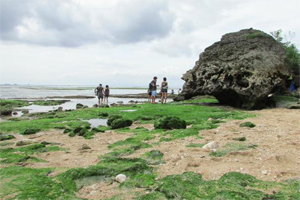

Actually, this beach had gained its famous since 1996 when a band “Michael Learns To Rock” used this beach as shooting location for their song video clip “Someday”. This beach’s name were then even boosted by the Hollywood film “Eat, Pray, & Love” starred by Julia Roberts took some of the scenes in Padang-Padang Beach.
Padang-Padang Beach is located around 32 km from Denpasar City and if you land on Bali through Ngurah Rai International Airport, it will only need 45 minutes. This beach has clear turquoise water and far distance from all the noises of a city, so it is a perfect place for relaxing, sunbathing, and surfing. Padang-Padang Beach is also well known for having great coral reef, so besides those activities mentioned earlier you can also do snorkeling to see directly its underwater beauty. Because of its beauty and uniqueness, this beach is in the category of top 20 beaches of South East Asia.
Padang-Padang Beach is also one of the best surfing areas in Bali because of its rocky seabed which can create barrel waves; a great wave for surfing. Almost every year, international surfing events are held in here. One of the examples is Rip Curl Cup Invitational which is held in Padang-Padang Beach every July and August. As one of the best beaches in Asia, Padang-Padang Beach is also supported by complete facilities such as wide parking area for its visitors. There are also a lot of café and shops selling food and beverages and some souvenirs. So, if you want to taste the adventure and unique beauty in this beach, do not hesitate to visit Padang-Padang Beach. Its charm, cleanliness, and tranquility can make you feel at a hidden paradise.



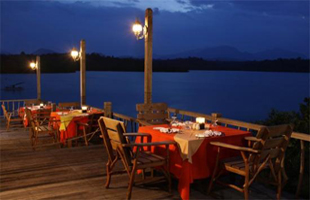

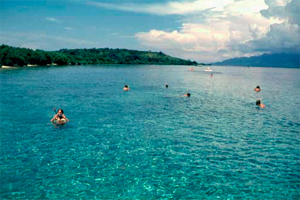
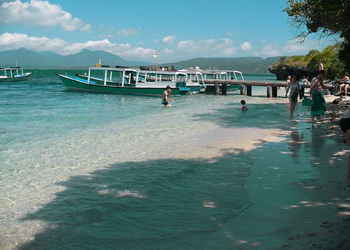
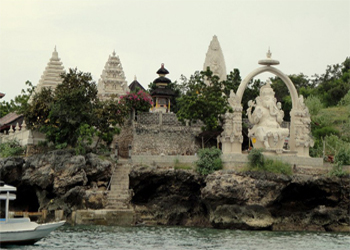


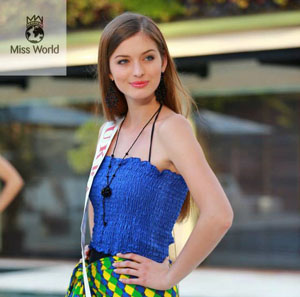 The historical and the oldest beauty pageant in the world, Miss World had been officially started on Sunday, 8 September 2013 in Mangupura Ballroom, Westin Nusa Dua Hotel, Bali. In that grand opening show, all the 130 contestants from all over the world performed charmingly with beautiful gowns which were designed by talented Indonesian designers.
The historical and the oldest beauty pageant in the world, Miss World had been officially started on Sunday, 8 September 2013 in Mangupura Ballroom, Westin Nusa Dua Hotel, Bali. In that grand opening show, all the 130 contestants from all over the world performed charmingly with beautiful gowns which were designed by talented Indonesian designers. 


 This September, Bali is visited by pretty women from all around the globe. They are not ordinary women, because they are the “princess” from their respective country. They will compete in a well known beauty pageant, Miss World which now is held in Indonesia. Miss world is the biggest and the oldest beauty pageant in the world. This contest was started in United Kingdom in 1951 which was founded by Eric Morley. The organization center is located in United Kingdom and now is led by the wife of Eric Morley, Julia Morley, after the founding father died in 2000. Miss World also owns franchises in more than 100 countries. Since founded in 1951, Miss World Organization has collected some charity funds for children all over the world. Miss World was started from bikini contest which at that time was started to be introduced to public. Miss World is under a big organization which every year holds the pageant followed by hundreds of beautiful ladies. One of the requirements for being the contestant of Miss World is being able to win the national beauty pageant in their respective country and become the “Miss”; or delegated by the license holder of Miss World in that country. The first Asian who won the Miss World was Reita Faria from India, when Miss World Pageant 1966 was held in Great Britain.
This September, Bali is visited by pretty women from all around the globe. They are not ordinary women, because they are the “princess” from their respective country. They will compete in a well known beauty pageant, Miss World which now is held in Indonesia. Miss world is the biggest and the oldest beauty pageant in the world. This contest was started in United Kingdom in 1951 which was founded by Eric Morley. The organization center is located in United Kingdom and now is led by the wife of Eric Morley, Julia Morley, after the founding father died in 2000. Miss World also owns franchises in more than 100 countries. Since founded in 1951, Miss World Organization has collected some charity funds for children all over the world. Miss World was started from bikini contest which at that time was started to be introduced to public. Miss World is under a big organization which every year holds the pageant followed by hundreds of beautiful ladies. One of the requirements for being the contestant of Miss World is being able to win the national beauty pageant in their respective country and become the “Miss”; or delegated by the license holder of Miss World in that country. The first Asian who won the Miss World was Reita Faria from India, when Miss World Pageant 1966 was held in Great Britain.
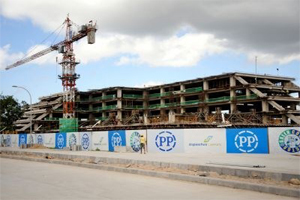

 It is not a secret that the renovations done to this airport is a part of Bali’s preparations in welcoming the APEC CEO Summit in the upcoming October. Besides renovating the look of the airport, the administrators have also added the capacity of private jet apron which is still under intense construction. This extra apron is located in the southern part of the airport. This construction is expected to be able to add around 14 airplanes parking spot which can accommodate about five Boeing 737 and more private jets. This effort is done to give more comfort for the nations’ delegations in visiting Bali.
It is not a secret that the renovations done to this airport is a part of Bali’s preparations in welcoming the APEC CEO Summit in the upcoming October. Besides renovating the look of the airport, the administrators have also added the capacity of private jet apron which is still under intense construction. This extra apron is located in the southern part of the airport. This construction is expected to be able to add around 14 airplanes parking spot which can accommodate about five Boeing 737 and more private jets. This effort is done to give more comfort for the nations’ delegations in visiting Bali.
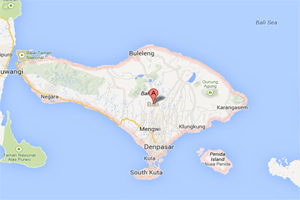
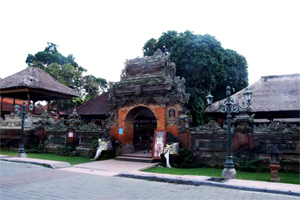


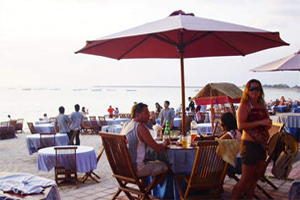
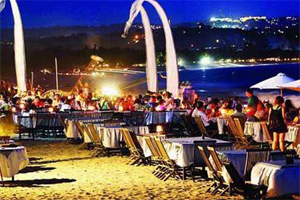 Kedonganan Beach is the “neighbor” of Jimbaran Beach. This beach is situated in Tuban Village, District of Kuta, Badung Regency. Because of its adjacent location with Jimbaran Beach, the trip to this beach is relatively the same, around 40 minutes from Denpasar abd dan 10 minutes from Ngurah Rai Airport.
Kedonganan Beach is the “neighbor” of Jimbaran Beach. This beach is situated in Tuban Village, District of Kuta, Badung Regency. Because of its adjacent location with Jimbaran Beach, the trip to this beach is relatively the same, around 40 minutes from Denpasar abd dan 10 minutes from Ngurah Rai Airport.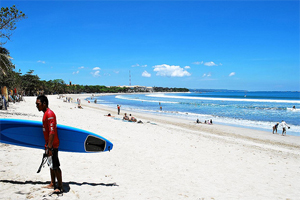
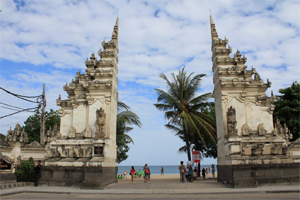 Bali has already known as one of the favorite tourist destinations globally. In the previous articles, there have been a lot of tourism objects discussed, especially natural objects like mountains, lakes, or beaches. Amongst the beaches, there is one famous name which is not yet discussed; Kuta Beach. No one doubts this beach’s worldwide reputation as the best beach for holiday. Almost all tourists who come to visit Bali must have visited this beach. Having holiday in Bali without visiting this white sand beach is indeed incomplete. Kuta Beach has been becoming a famous icon of Bali Island.
Bali has already known as one of the favorite tourist destinations globally. In the previous articles, there have been a lot of tourism objects discussed, especially natural objects like mountains, lakes, or beaches. Amongst the beaches, there is one famous name which is not yet discussed; Kuta Beach. No one doubts this beach’s worldwide reputation as the best beach for holiday. Almost all tourists who come to visit Bali must have visited this beach. Having holiday in Bali without visiting this white sand beach is indeed incomplete. Kuta Beach has been becoming a famous icon of Bali Island.

 Some people have proposed few names for the first highway in Bali. For example, an academician from Udayana University, Prof I Nyoman Darma Putra suggested that this highway is named after a great Balinese artist I Wayan Lotring (1898-1983).
Some people have proposed few names for the first highway in Bali. For example, an academician from Udayana University, Prof I Nyoman Darma Putra suggested that this highway is named after a great Balinese artist I Wayan Lotring (1898-1983). 
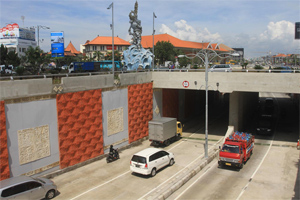 Underpass is another solution that Balinese government offers to reduce the traffic jam in Bali. Underpass Dewa Ruci consists of two ways; one from south (from Ngurah Rai Airport to Sunset Road) and one from north (from Sunset Road to Ngurah Rai Airport). This area is indeed the most crowded area that always experiences high traffic.
Underpass is another solution that Balinese government offers to reduce the traffic jam in Bali. Underpass Dewa Ruci consists of two ways; one from south (from Ngurah Rai Airport to Sunset Road) and one from north (from Sunset Road to Ngurah Rai Airport). This area is indeed the most crowded area that always experiences high traffic.